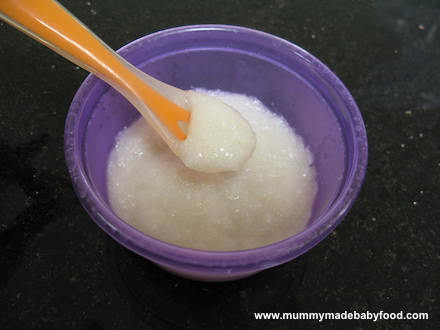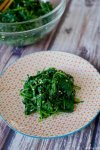- Serves 4
- Introducing Food
An Introduction to Weaning Baby
This page may contain affiliate links, which means we receive a small commission for purchases made using the links. There is no additional cost to you. Please read our full disclosure policy.
What is the best age to start?
Most health experts recommend weaning baby at 6 months, including guidelines from organisations such as the American Academy of Pediatrics, the UK Department of Health and Australia's Department of Health and Ageing. Solid foods are typically introduced when milk alone is no longer sufficient to satisfy baby's hunger or to meet his nutritional requirements.
There may be certain medical or other reasons why baby’s doctor may suggest weaning baby before 6 months; however, most doctors would discourage doing so before baby reaches the age of 4 months. At that young age, the majority of babies are not yet sitting upright on their own, and their digestive systems are still too immature to be able to process solid food.
Furthermore, before 4 months, babies have not developed the proper tongue coordination to be able to push and swallow food. Thus, weaning baby and introducing solids before this age also poses a risk of choking.
Additional risks of weaning baby before 4 months include an increased risk of developing allergies and certain illnesses, including respiratory illness and wheezing in childhood. Introducing solids too early is also linked with a higher percentage of body fat, which may contribute to a child being overweight.
On the other hand, weaning baby much later than 6 months can also lead to complications. Baby’s own iron reserves begin to run out after 6 months, and to avoid iron deficiency, he needs to replenish his stores from solid foods. Introducing solids too late also risks baby not developing an interest in them, and instead preferring milk, thereby leading to an insufficient intake of nutrients.
Check out these indicative cues for weaning baby - if your baby is very hungry, is at least 4 months old and is showing other signs of readiness, then you may consider introducing solid foods before 6 months. Before you do this, please speak to your health advisor or baby’s paediatrician.
How do you begin introducing solids?
There are generally 3 Stages to weaning baby, with Stage 1 beginning sometime between 4-6 months. Whenever you decide to introduce solids, the best first foods for baby are typically something very smooth in texture and bland in taste, such as baby rice or other baby cereal (although I preferred baby rice, as it was the blandest food possible!). The smooth texture makes it easy for small mouths to swallow, and the bland taste allows little taste buds to adjust gradually.
Begin by introducing a bit of baby rice (or other cereal) after one of baby’s milk feeds. It is important to do this after a milk feed, so that baby doesn’t fill up first before drinking his required milk. At this age, milk is still the main source of baby’s nutrition.
Try introducing the baby rice after the bedtime milk – the filling carbohydrates will make baby more likely to sleep through the night! This feed will eventually become dinner.
Once baby is happy eating baby rice and there are no adverse reactions, you can begin to introduce some purees into his diet. Start with fruit purees – they are generally sweeter, and baby will be more likely to eat them – followed by vegetable purees.
Begin by mixing one tablespoon (15ml) of fruit or vegetable puree with some baby rice, to gradually ease baby onto the new flavour. Once he is happily eating the combination, you can increase the amount of fruit or vegetable puree and decrease the amount of rice. You can then combine the various fruit and vegetable purees, and eventually introduce protein into baby’s diet (more on that later).
In addition to the bedtime feed, also introduce purees in late morning after baby's milk feed. This feed will eventually become lunch.
Introduce new foods every 2 to 3 days, to allow enough time for any allergies or digestive difficulties to develop. If you are weaning baby before 6 months, allow more time (3 to 4 days) between the introduction of new foods, as baby’s digestion is less mature, and it may take longer for intolerances to show up.
If your baby has been comfortably digesting two feedings of fruit, vegetable and baby rice per day for a couple of weeks, you can introduce a bit of plain yoghurt or oat cereal after his morning milk feed. This feed will eventually become breakfast.
Your baby may initially reject the sourness of plain yoghurt, but a bit of mashed ripened banana mixed in should do the trick!
You should introduce baby to a wide variety of flavours during Stage 1 weaning. By the time he reaches 7 months, he should ideally be eating solids at 3 times during day and be comfortable digesting about 6 tablespoonfuls (90ml) of fruit and vegetable puree and/or baby rice at each meal.
So what are the best purees to start with?
Fruit is generally easier to start with, as the natural sweetness appeals more to babies. Pears are a nice way to begin, followed by apples, peaches and mangoes. The riper the fruit is, the more naturally sweet it will taste, so if you don’t want your baby to develop a taste for very sweet things, don’t allow the fruit to ripen too much.
When you first begin weaning baby, it is safer to cook the fruits first before pureeing them. Cooking the fruits will make them easier for baby’s delicate digestive system to process. After you have established that he has no intolerances to the cooked fruits, you can begin introducing some raw fruits into baby’s diet, but make sure the fruit is sufficiently ripe and soft in texture. Harder fruits, such as apples and some pears, can be finely grated to make it easier for baby to eat.
Fruits such as avocado or banana tend to be harder to digest, so wait a couple of weeks before introducing these to your baby. These fruits don’t lend themselves to being cooked very easily, so make sure they are ripe and soft – and mash them well with a fork – before serving to baby.
Once your baby is happily eating a few basic fruits, you can start introducing vegetables into his diet. Root vegetables have a natural sweetness to them, especially when cooked, and will likely be easier for baby to accept. Carrots, parsnips and sweet potatoes are good choices to begin with.
And if you want your baby to eat his greens later in life, best to introduce broccoli into the mix now! Green beans and courgettes (aka zucchini) are also good choices of greens to introduce to baby.
When your baby is happily eating a varied selection of fruits and vegetables, you can begin the mix them together to allow him to experience multiple flavours as part of one meal. Once he has mastered multiple flavours, it may be time to introduce protein!
How do I introduce protein into baby's diet?
If you plan to introduce meat meat (or plant-based pulses, if baby is vegetarian) into baby’s diet, he should ideally first be comfortable digesting at least 6 tablespoonfuls (90ml) of fruit or vegetable puree and/or baby rice per meal. Protein works the digestive system harder, so your baby first needs to be able to digest larger quantities of food.
Chicken is the easiest form of animal protein to start with, as its flavour is not as strong as that of other poultry or meat. Introduce chicken gradually by first feeding your baby some vegetable puree mixed with a bit of chicken stock.
Once he has been eating chicken stock for a few days and is comfortable with the taste, you can try him on some meat with this recipe for Chicken Casserole puree. For vegetarians (or non-vegetarians alike!), this recipe for Tasty Red Lentils puree is a great introduction to pulses.
By the time baby reaches 7 months, he should be eating approximately 8 tablespoonfuls (120ml) of food per meal.
What's on your mind?
Let us know any thoughts, comments or questions by getting in touch here.







